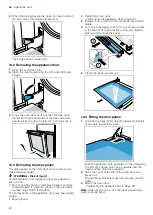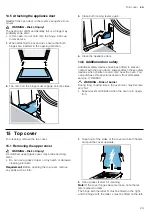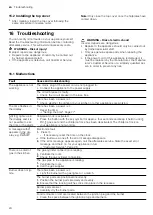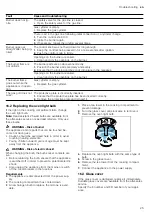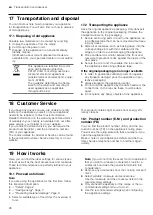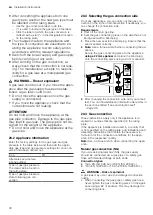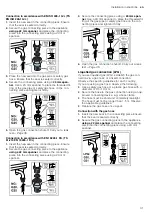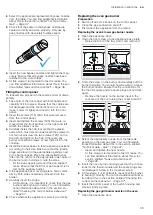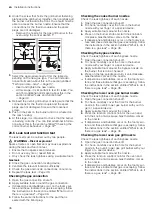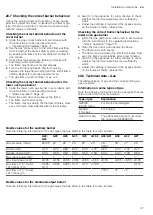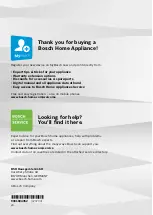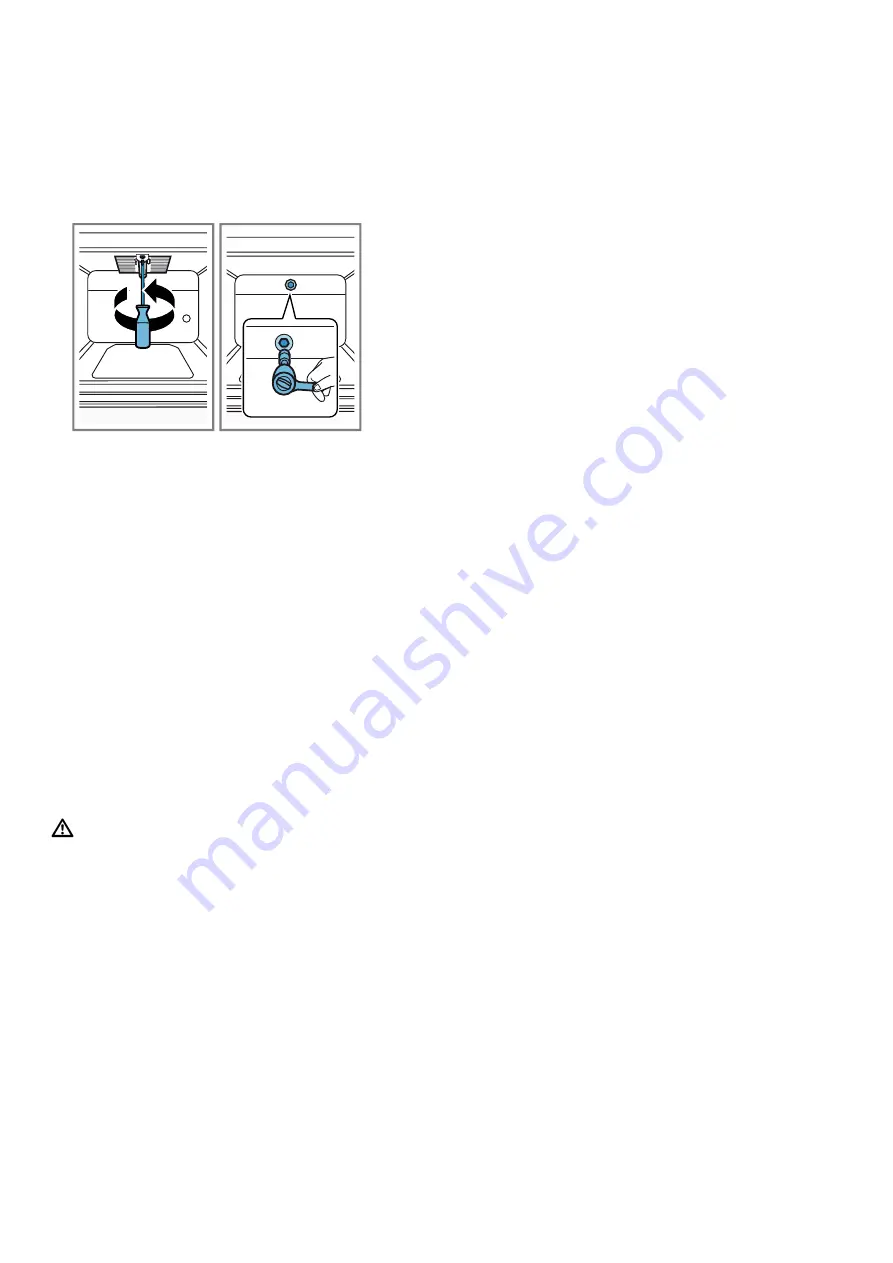
en
Installation instructions
36
2.
Undo the screw that holds the grill burner fastening
plate and the grill burner together, then carefully pull
the burner out towards the front. You should now be
able to access the burner nozzle. Ensure that the
connections for the thermocouple and the spark
plugs are not damaged.
‒
Remove the nozzle for the gas grill burner in the
oven using the socket wrench 7.
3.
Select the appropriate nozzle from the table de-
pending on the new gas type. You can find addi-
tional information about this in the section entitled
"Technical data – Gas" →
‒
Insert and tighten the new nozzle.
‒
At this stage, it is important to test for leaks. You
can find additional information about this in the
section entitled "Leak and function test"
→
4.
Reinsert the oven's grill burner, making sure that the
connections for the thermocouple and the spark
plugs are not damaged. Screw in the loosened
screw.
5.
Push in the seal on the burner until it is situated on
the rear housing.
6.
At this stage, it is important to check that the burner
is burning correctly. You can find additional informa-
tion about this in the section entitled "Checking the
correct burner behaviour →
".
20.6 Leak test and function test
The leak test must be carried out by two people.
WARNING ‒ Risk of explosion!
Sparks, flames or open flames may cause explosions
during the leak and function test.
▶
Ensure that no sparks are produced.
▶
Do not use any fire or naked flames.
▶
Only check the leak tightness using a suitable foam.
Gas leak
¡
Close the gas connection locking device.
¡
Ventilate the relevant location sufficiently.
¡
Check the gas and nozzle connections once more.
¡
.
Checking the gas connection
1.
Open the gas connection shut-off.
2.
Apply suitable foam around the gas connection.
a
If dispersions and bubbles occur on the foamy sur-
face and these indicate that gas is escaping, follow
the instructions in the section entitled "What to do if
there is a gas leak" →
3.
Follow the same instructions for the part that is
sealed with the blind plug.
Checking the cooker burner nozzles
Check the leak tightness of each nozzle.
1.
Open the gas connection shut-off.
2.
To check, carefully cover the hole in the burner
nozzle with your finger or a special device.
3.
Apply suitable foam around the nozzle.
4.
Press on the burner knob and turn the knob anti-
clockwise. Gas therefore comes to the nozzle.
a
If dispersions and bubbles occur on the foamy sur-
face and these indicate that gas is escaping, follow
the instructions in the section entitled "What to do if
there is a gas leak" →
Checking the bypass nozzles
Check the leak tightness of each bypass nozzle.
1.
Open the gas connection shut-off.
2.
To check, carefully cover the hole in the burner
nozzle with your finger or a special device.
3.
Apply suitable foam around the bypass nozzle on
the burner that is to be checked.
4.
Press on the tap spindle and turn it anti-clockwise.
Gas therefore comes to the nozzle.
a
If dispersions and bubbles occur on the foamy sur-
face and these indicate that gas is escaping, follow
the instructions in the section entitled "What to do if
there is a gas leak" →
.
Checking the lower oven gas burner nozzle
Check the leak tightness of each bypass nozzle.
1.
Open the gas connection shut-off.
2.
To check, carefully cover the hole for the burner
nozzle in the oven's lower gas burner with your fin-
ger or a special device.
3.
Apply suitable foam around the nozzle.
4.
Press the function control knob for the oven and
turn the knob anti-clockwise. Gas therefore comes
to the nozzle.
a
If dispersions and bubbles occur on the foamy sur-
face and these indicate that gas is escaping, follow
the instructions in the section entitled "What to do if
there is a gas leak" →
.
Checking the lower oven gas grill nozzle
Check the leak tightness of each bypass nozzle.
1.
Open the gas connection shut-off.
2.
To check, carefully cover the hole for the burner
nozzle in the oven's lower gas grill burner with your
finger or a special device.
3.
Apply suitable foam around the nozzle.
4.
Press the function control knob for the oven and
turn the knob anti-clockwise. Gas therefore comes
to the nozzle.
a
If dispersions and bubbles occur on the foamy sur-
face and these indicate that gas is escaping, follow
the instructions in the section entitled "What to do if
there is a gas leak" →
.

